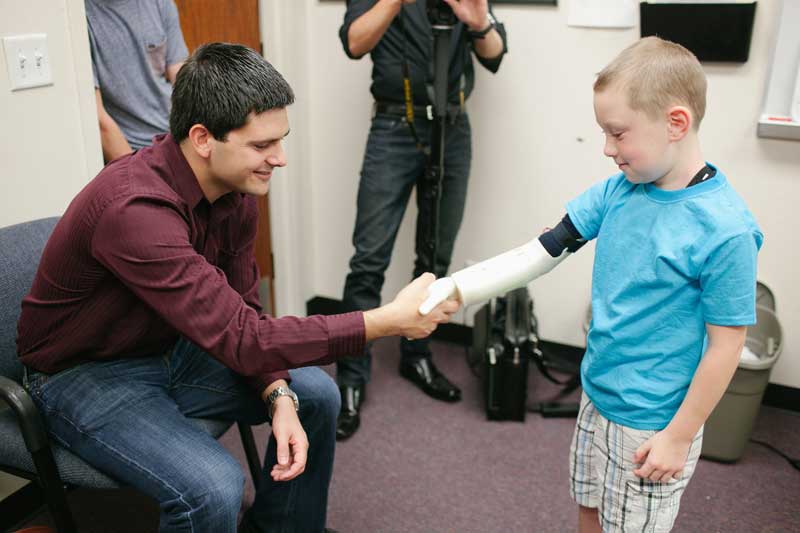Albert Manero is a Fulbright Scholar, a doctoral student in Aerospace Engineering at the University of Central Florida and a keen inventor. He’s recently been in the news because in addition to that, he has a big heart. After hearing a radio story about a man in South Africa who used a 3-D printer to make a prosthetic hand he decided to put his talents to work. His creation: a low-cost bionic arm for six-year-old Alex Pring, who was born with no arm from the elbow down. As soon as Albert met him, he was inspired to help.
The two met after Albert began to volunteer with e-NABLE, a worldwide community of volunteers that uses 3-D printing technology to make prosthetics. The cost of prosthetics is prohibitive for many and is seldom covered by insurance. As 3-D printers become more commonplace, artificial limbs have never been more affordable. This specific use of technology has inspired many as e-NABLE has managed to recruited over 4,000 volunteers in 30 countries to help underserved populations all over the world by creating prosthetics. Albert wasn’t the only one inspired, but he took it to the next level.
Albert recruited a team of 15 graduate students who took only seven weeks to design and produce a bionic arm using 3-D printed parts and factory-made gears and batteries. The committed group of engineers would sometimes staying up until late in the night to test and tweak Alex’s arm. A traditionally produced prosthetic arm costs anywhere from $3,000 to $40,000, depending on its features. The prototype they built for Alex cost around $350 and the printed parts can be easily replaced for around $70 when he grows.
When they gave Alex his arm to wear for the first time, the first thing Alex did was go give his Mom his first two-armed hug. There wasn’t a dry eye in the house.
One of my favorite things about the arm is the design of the hand because it looks more like a human’s hand. We decided against the traditional claw design because we wanted Alex to feel like a superhero instead of a super villain… Our goal is to make these arms affordable and accessible for children.
The video below is part of the Collective Project and shows Alex getting a new improved bionic hand from Iron Man himself. Since creating Alex’s bionic arm, Albert founded Limbitless, to continue using 3-D printers to craft artificial limbs for those in need.

